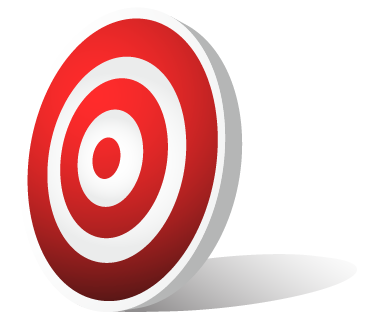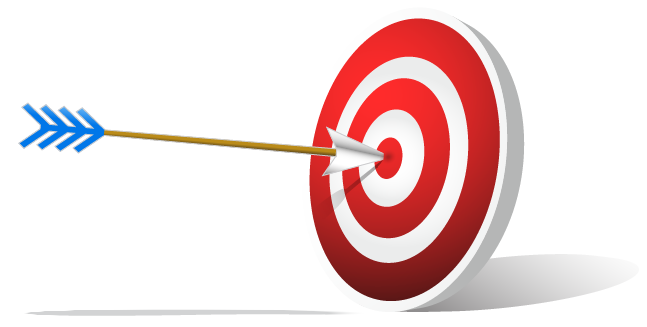Introduction
This site will introduce you to instructional goals, the three types of instructional objectives you may need to create to reach your goals, and the best way to write and assess them. Enjoy!
What is a Goal?
Goals are broad, generalized statements about what is to be learned. Think of them as a target to be reached, or "hit."

Goal Example: Students will gain an understanding of world cultures.
What is an Objective?
Objectives are the foundation upon which you can build lessons and assessments that you can prove meet your overall course or lesson goals. Think of objectives as tools you use to make sure you reach your goals. They are the arrows you shoot towards your target (goal).

Objective Example: Given a list of comparison points, students will compare the three major points of two given cultures in writing with 90% accuracy.
Are Goals and Objectives Really That Important?
The purpose of objectives is not to restrict spontaneity or constrain the vision of education in the discipline; but to ensure that learning is focused clearly enough that both students and teacher know what is going on, and so learning can be objectively measured.
Different archers have different styles, so do different teachers. Thus, you can shoot your arrows (objectives) many ways. The important thing is that they reach your target (goals) and score that bullseye!

Thus, stating clear course objectives is important because:
- They provide you with a solid foundation for designing relevant activities and assessment. Activities, assessment and grading should be based on the objectives.
- As you develop a learning object, course, a lesson or a learning activity, you have to determine what you want the students to learn and how you will know that they learned. Instructional objectives, also called behavioral objectives or learning objectives, are a requirements for high-quality development of instruction.
- They help you identify critical and non-critical instructional elements.
- They help remove your subjectivity from the instruction.
- They help you design a series of interrelated instructional topics.
- Students will better understand expectations and the link between expectations, teaching and grading.
Types of Objectives
There are three types of objectives:
- Cognitive
- Affective
- Psychomotor
Read on to learn about these different types!